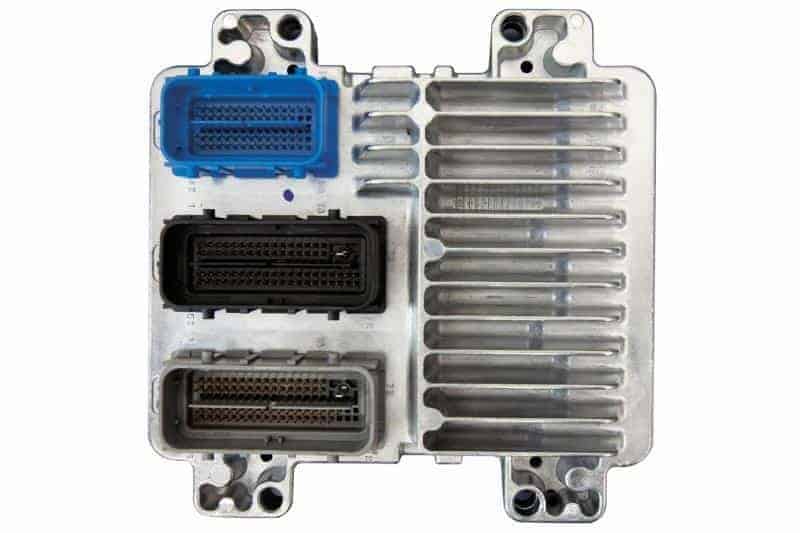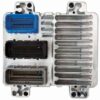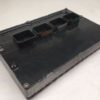Is Your Cadillac XLR Running Rough? The ECM Might Be the Culprit.
The Engine Control Module (ECM), often called the engine computer, is the electronic brain of your 2006 Cadillac XLR. It controls everything from fuel injection and ignition timing to transmission shifting and emissions systems. When it begins to fail, it can cause a cascade of confusing and frustrating problems, leaving your high-performance vehicle feeling sluggish, unpredictable, or even undrivable. If you’re experiencing stalling, poor fuel economy, or a persistent check engine light that other repairs haven’t fixed, a faulty ECM is a likely cause.
We had a 2006 Cadillac STS come in with a bizarre set of symptoms. The owner complained of random stalling at traffic lights and occasional hard shifting, but the check engine light was intermittent. We checked for vacuum leaks, tested sensors, and even inspected the transmission fluid. Everything seemed fine. After hours of diagnostics, we hooked up a scope to the ECM’s main power and ground circuits. We discovered intermittent voltage drops that corresponded with the stalling events. The internal power regulation circuit of the original ECM was failing. We installed a VIN-programmed replacement module, performed the security relearn, and the car ran perfectly. It’s a classic example of how a failing computer can mimic a dozen other mechanical problems.
Symptoms of a Failing Engine Control Module
- ✔ Check Engine Light is on with various communication or processor-related fault codes.
- ✔ Unexplained drop in fuel efficiency.
- ✔ Engine misfires, stumbles, or hesitates during acceleration.
- ✔ Difficulty starting the engine or a complete no-start condition.
- ✔ Automatic transmission shifts erratically or harshly.
- ✔ Stalling for no apparent reason, either while driving or at idle.
- ✔ Loss of power and overall poor engine performance.
The Direct Solution for Your 2006 XLR Engine Module
Don’t let a faulty computer keep your Cadillac sidelined. This replacement Engine Control Module is the definitive solution to restore your vehicle’s performance and reliability. Unlike a generic part from a local store, this module is not just a piece of hardware; it’s a complete, plug-and-play solution. We take the guesswork out of the repair by programming the unit specifically for your vehicle using your unique Vehicle Identification Number (VIN). This ensures that all factory settings, security information (anti-theft), and performance parameters are a perfect match for your XLR’s original configuration. This unit is a direct replacement for multiple service numbers, including 12590032, 12602044, 12603530, 12605843, 12607096, 12630457, and 19210737.
Upon receiving your order, we will contact you for your VIN. Our technicians will then flash the module with the latest, most stable software updates from GM. This often corrects underlying drivability issues that were present even in the original factory programming. The result is a seamless installation process that gets you back on the road quickly, without the need for expensive dealership programming or specialized tools. Simply install the module, perform a standard security relearn procedure if necessary, and enjoy the restored power and smoothness of your vehicle. Getting a quality, correctly programmed 2006 XLR Engine Module is the most critical step in this repair.
Frequently Asked Questions
Do I need to have this module programmed?
No. The main benefit of our service is that we program the module for you before it ships. All you need to do is provide us with your vehicle’s VIN after you place your order. It will arrive ready for installation.
What is a VIN and where do I find it?
The VIN is your vehicle’s unique 17-digit identification number. You can typically find it on the driver’s side of the dashboard (visible through the windshield), on the driver’s side door jamb sticker, or on your vehicle’s registration and insurance documents.
Will this fix my check engine light?
If the check engine light is caused by a faulty ECM, then yes, this part will resolve the issue. However, the check engine light can be triggered by many other components. It is essential to have a proper diagnosis performed to confirm the ECM is the root cause of the problem.
Is any special procedure needed after installation?
In many cases, the module is plug-and-play. However, on most GM vehicles, you may need to perform a simple security relearn procedure (often called a Passlock or anti-theft relearn). This procedure can typically be done without special tools and involves a sequence of key turns. Instructions are widely available online or in service manuals.
How can I be sure my original ECM is the problem?
Proper diagnosis is key. A technician should first rule out all other potential causes, such as faulty sensors, wiring issues, or poor power/ground connections to the ECM. If all other components check out and diagnostic codes point to an internal processor fault (e.g., P0601, P0606), it is highly likely the ECM has failed.


